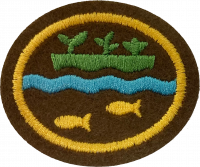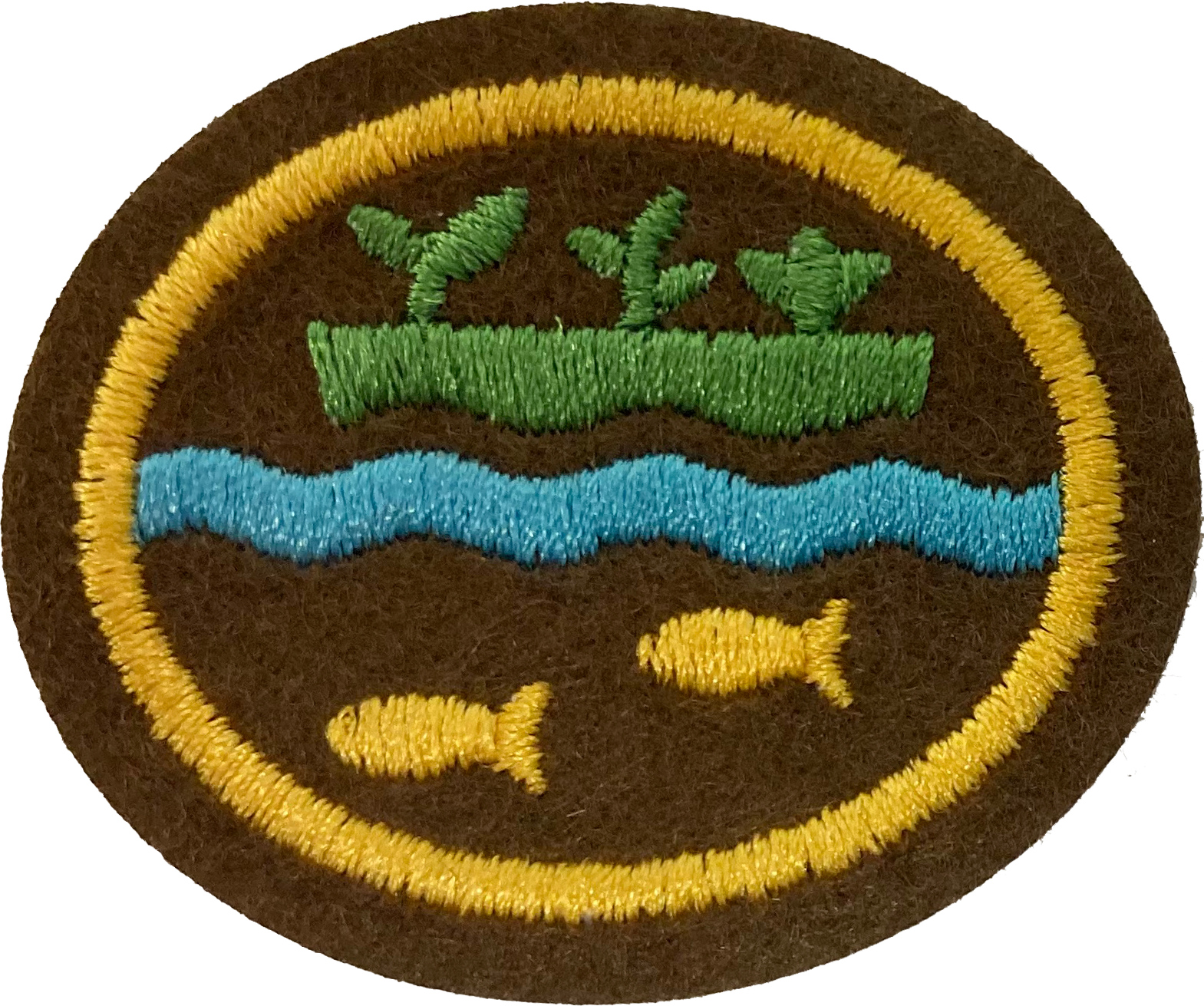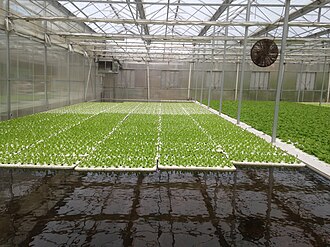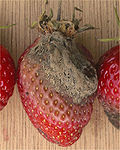Especialidades JA/Hidroponía y acuaponía/Respuestas
Nivel de destreza
2
Año
2021
Version
31.12.2025
Autoridad de aprobación
División Norteamericana
1
Aquaponics: A system using fish waste to fertilize plant growth. Plants filter the water and return the cleaned water to the fish. Basically a contained ecosystem.
Hydroponics: Similar to aquaponics, minus the fish. A system of growing plants without soil, but often involving gravel, sand, or other media.
2
Similarities: Both include the growth of plants (obviously), utilize water, and are productive in growing food for human consumption. Hydroponics often involves fertilizers. Aquaponics involves an ecosystem.
Differences: Neither hydroponics nor aquaponics involves the use of soil. Aquaponics does not use fertilizers but does use fish and hydroponics is not a complete ecosystem. Both are often built indoors to accommodate better temperature control.
3
Wick System: Consists of a water reservoir, a container to grow the plants in (often set on top of the water reservoir), and a wick, made of anything from felt to cotton to coconut coir. Moving water from the water reservoir to the plant by means of a wick. Similar to the way oil is drawn up the wick in a lamp, the water is moved close to a plant's roots for absorption.
Deep Water Culture: Consists of a water reservoir, containers with which the plants are suspended into the water and a way to keep them on the surface, and an air pump and air stone. The plants are suspended in such a way that the roots sit directly in the water. The air stone is put in the water under the plants to aerate the water to ensure that the plants don't suffocate or drown. This is one of the most common system setups.
Nutrient Film Technique: Similar to Deep Water Culture and popular commercially. Consists of a water reservoir, a pump and a separate growing tray for the plants. The water is pumped from the tank to the tray which is sloped to cause the water to flow from one end to the other to water the plants. When the water reaches the other end, it flows back into the reservoir.
Flood and Drain: Consists of a water reservoir, a tray for the plants, and sometimes a water pump. The plants are not constantly exposed to water in this system, but at certain times per day, the roots are flooded for a certain period of time, then drained. This can be done manually by filling it by hand, or by pump, or even more advanced by attaching the pump to a timer.
Drip Systems: Consists of a water reservoir, a plant tray, and a pump with tubing to each plant. The pump pumps water from the reservoir through the tubing to drip into the individual plant containers. The water that seeps out of the bottom is collected in the tray and returned to the reservoir. This system is most common commercially as the set-up cost is a bit higher than many of the other models and requires a little more maintenance.
Aeroponics: One of the most complex and high-tech system. Consists of a water reservoir (as always) with a watertight or near water tight lid into which the plants are attached, their roots hanging into the container below. The roots do not rest in water as with the Deep-Water Culture system, but a mister inside the system keeps the roots moist, watering them through this mist rather than from direct contact with the water.
How do aquaponics systems compare: Aquaponics systems are very similar except for the fact that aquaponics includes fish in the cycle. This may cause problems in some of the systems such as drip systems as the system has to work around the solid fish waste. This can clog systems and disrupt the cycle, possibly causing overflow and flooding.
4
Hydro/aquaponics are:
- Somewhat easy to set up
- Do not take much space
- Can be easily scalable to the size of the space that they are being grown in
- Can grow plants on racks stacked above each other, which means more plants per foot of space
- Can be built nearly anywhere including in the middle of big cities
- Are more easily controlled with fewer losses
- Are relatively inexpensive and accessible to all
- Can be a good way to grow organic food
- Can be a source of income
5
Aquaponics: Does not require fertilizers, simple to set up, dual income from both the plant and the fish, minimized disease.
Hydroponics: Does not have to deal with fish health, can be stacked more easily for maximized floor space efficiency, less smell.
6
A medium, in this case, is a non-soil substance in which the plants grow but receive no or minimum nutrients from. The purpose of this is to keep the plants in an upright position and to allow water and/or fish waste to become trapped around the plants roots for absorption. Examples of these are gravel, sand, coconut coir, wood chips, clay balls, or Perlite.
7
Hydroponic and aquaponic systems both produce much higher yields in comparison to more common farming, such as large scale outdoor farming. These yields of hydro/aquaponics average from 10 to 12 times the yield of outdoor agriculture per acre, but have been cited to be up to 100 times per acre in some rare cases.
Hydroponics and aquaponics can be very similar as far as yields go, depending on the system, the lighting, the quality of water, the fertilizers, etc. An important note to remember is that fish waste is a highly nutritious and natural fertilizer and the size and quality of the plants grown in it are often much better than those grown in fertilized water.
8
Hydroponics: In many commercial growing settings, the plants do not have strong immune systems since they have not been exposed to the outdoor life which would harden them against diseases. This is in contrast to aquaponics which has a bit more exposure due to the fish and the bacteria associated with them. Many commercial hydroponic systems require a near sterile environment because of this. Diseases include powdery mildew, root rot, rust, botrytis, among many others.
Aquaponics: Some of the most common diseases for the plants include powdery mildew, lettuce mosaic virus, tomato spotted wilt virus, and deficiencies such as iron and magnesium.
- Powdery mildew .jpg
Powdery Mildew
- Root Rot .jpg
Root Rot
- Wheat leaf rust .jpg
Rust
- Lettuce mosaic virus .jpg
Lettuce Mosaic Virus
- Tomato spotted wilt virus .jpg
Tomato Spotted Wilt Virus
- Iron deficiency in plants .jpg
Iron Deficiency
- Magnesium deficiency in plants .jpg
Magnesium Deficiency
Powdery Mildew: Develops when standing water is allowed prolonged contact with the plant in areas other than its roots. Prevention involves avoiding allowing this water from pooling on or around the stems and leaves of the plants. Fungicides and other treatments are available that will help to curb this problem. Also, sprays that are high in potassium are highly suggested in the growing world for this.
Root Rot: Caused by bacteria around the roots that eat at them until the plant dies. If caught soon enough, remove the infected area and spray with fungicide.
Rust: Not rust as in oxidized iron. High humidity is the cause of this. Most often found under the leaves as red powdery spots. To prevent from spreading, spot treat with rust- prevention chemicals.
Botrytis: Fuzzy white areas on leaves. Caused by poor ventilation. Take off affected plant parts and create better air flow.
Lettuce Mosaic Virus: This is a genetic virus that has no cure. Although it is not a hazard to people, it can easily destroy an aquaponics system, and can be transferred between plants by insects. Prevention is the trick. Pull plants that look like they are ill and quarantine them. If they recover, great! If not, they might have had a system-hazardous illness.
Tomato Spotted Wilt Virus: It looks just like the name suggests. There is not a treatment for it, so removing a plant that looks odd is key before it can spread. The produce will ripen oddly and the skin of the plant's fruit will develop odd welts. Not a good sign. Deficiencies: In an aquaponics system, this may be caused because the fish may compete with the plants for a certain nutrient. Also, pH can cause damages as well. Taking water tests for serious growers and keeping the water moving and clean for less experienced growers will help to solve this problem.
Fish Diseases: Then there are fish diseases. Anything that affects the fish has the possibility to affect the plants. This may or may not be a transfer of diseases, but if the water gets toxic for the fish, it is probable that it is not be good for the plants either. Insect Infestation: These can be a major cause of concern as the plants are inside, unexposed to a number of animals that would keep the plants free of the pests. In a hydroponics system, manually removing the insects or using insecticides are recommended. Since insecticides cannot be used in aquaponics, manually removing the insects is good, but removing the plant and letting it soak completely in the fish's water for a while will cause the insects to let go. A great source of food for the fish!
Treatment: One of the best treatments is prevention. More specific prevention from spreading. If a leaf looks odd, take it off. If a plant looks sickly, replace it. There may be reasons that the plant is not doing well, especially if the other plants are thriving. If all the plants are sickly, that is a sign that either the entire system is infected, or there is a deficiency. Of course, this is assuming that water and light, humidity, and the other basic elements of plant survival are adequate.
The simple answer to why you should never use chemicals in an aquaponics system is because using chemicals will affect the fish poorly.
9
This completely depends on the type of system being built, as well as how intricate you plan to make it. Refer back to question 5 for more specifics. Here's a list of components you might need to set up your system:
Hydroponics:
a). A container for water
b). A tray for plants, possibly one that can be set over the water reservoir
c). A pump and tubing, depending on the system
d). PVC pipe and connectors or other material if stacking the plant trays
e). Electricity for plugging in equipment
f). Air pump and air stone, depending on the system
g). Plants
h). A fertilizer of some sort
i). Sun light and/or a grow light
j). For more advanced systems or systems with extremes in temperature, a thermostat
Aquaponics:
a). A container for water and fish
b). A tray for plants, possibly one that can be set over the water reservoir
c). A pump and tubing that won't get clogged easily, depending on the system
d). PVC pipe and connectors or other material if stacking the plant trays
e). Electricity for plugging in equipment
f). Air pump and air stone, depending on the system
g). Plants
h). Fish
i). Fish food
j). Sun light and/or a grow light
k). For more advanced systems or systems with extremes in temperature, a thermostat
l). Thermometer for the fish's water to monitor water temperature
10
The purpose of this is to gain experience with hydro/aquaponics and get the participants used to the basic operation of a simple system. For a time crunch, growing herbs or even radishes, which take about 15 to 20 days till harvest, may be productive. Wheatgrass or alfalfa sprouts can be ready for harvest in just over a week or so. Growing other plants with a longer growth period, such as tomatoes or lettuce, would be advised if the full experience is desired.
11
11a
These can be difficult to find, but many local growers use hydroponic or aquaponic methods. If you can find an establishment that specializes in either hydroponics or aquaponics, definitely don't pass on the opportunity to check it out!
11b
Your best chances of finding an expert on the fish used in aquaponics would be to ask the operator of an aquaponic farm. Ask them who they consult. They themselves probably did some research and could tell you why the fish that they chose would make the best fit for an aquaponic farm.
11c
To do this, you need to either buy or grow produce that is hydroponically or aquaponically grown. You might consider doing this requirement while you complete Requirement 10! Once you have the produce in hand, compare it with produce that has not been grown in one of these manners. Most produce found at the supermarket will fall into this category. Can you tell a difference between the two?
11d
Hydroponics and aquaponics can be a huge benefit to communities all over the world. Not only can it get fresh, healthy, locally-grown food to people quickly and inexpensively, but it can also be adapted to a wide range of plants, needs, and geographic locations! Use what you've learned to show the benefits of these farming methods to the world!
12
No matter how much adaption we make in the growing of crops, we can't forget that God is the giver of it! How many parallels can you come up with between hydro- or aquaponics and our spiritual journey with Christ? Share what you've learned!






